




Business ownerswho value asafeworkenvironmenttrustEMCInsuranceCompanies tonotonlyinsuretheirgreatestassets,buttoalsohelpminimizeaccidentswith expertloss controlservices.When aclaimdoesneedtobefiled, wework hardtohandleitas fairlyand quicklyaspossible. With overacentur yofexperienceandcoverages fornearly50 0t ypes ofbusinesses,it’snowonderorganizationsinmorethan40states CountonEMC
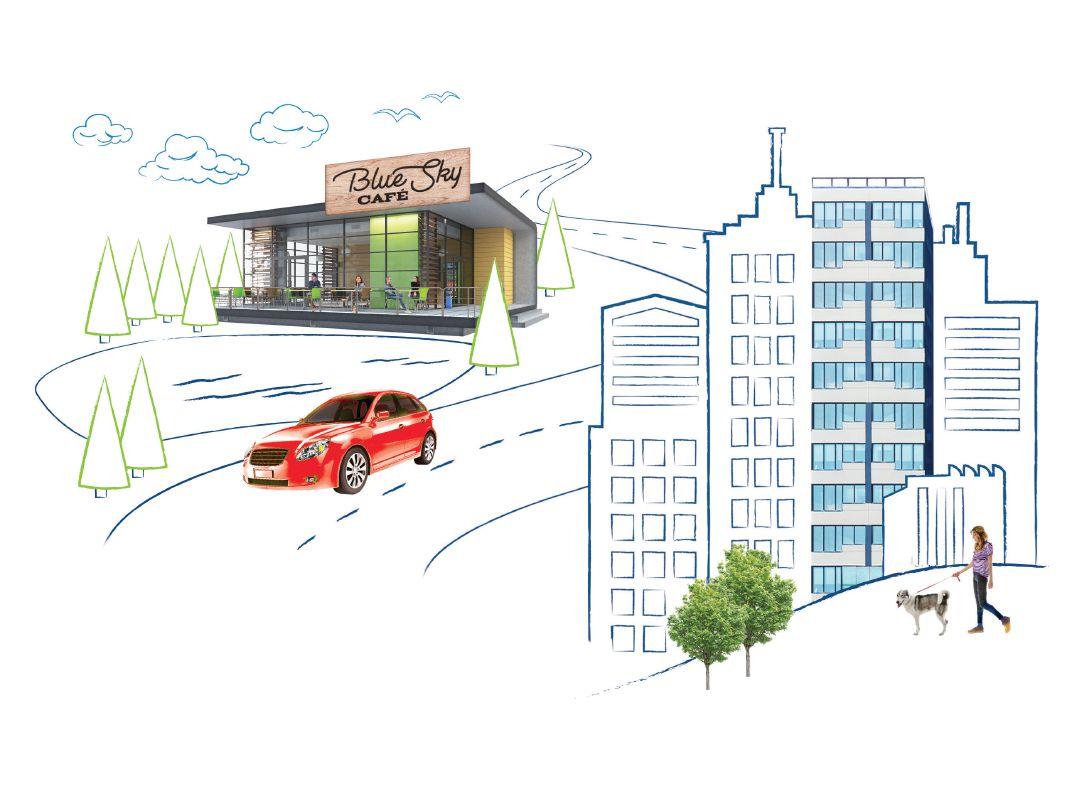
FindanEMCagent near youatemcins.com.
©Copyright Employers Mutual CasualtyCompany2020. All rights reserved.




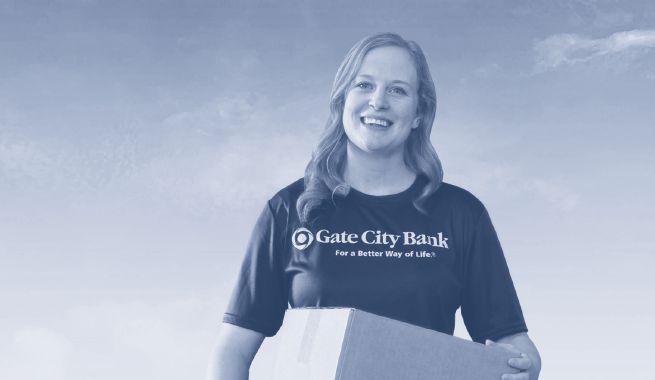
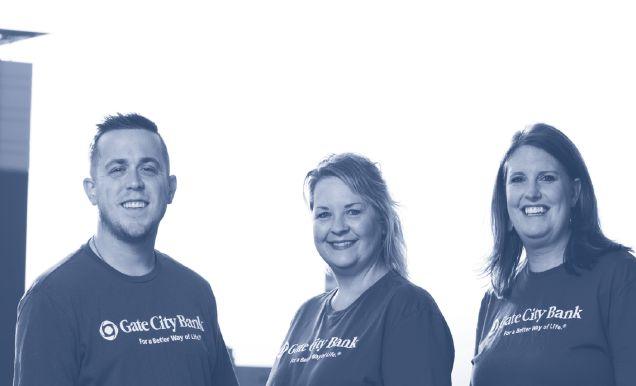


TheNorthDakotaDepartmentofCommerce’s EconomicResiliencyGrant(ERG) Programhas beencreatedto help restoreconsumerconfidence inthemarketplacewhile reducingthespreadof COVID-19.

TheERGisagrant–notaloan.
NorthDakotabusinessescanapplyfor grant fundingupto$50,000 (upto$100,000for businesseswithmorethanonelocation)forinvestments withthepurposeof reducingthespreadofCOVID-19. Applicationsauditedforaccuracy. Falseinformation subjecttolegalaction.
To beeligible,businessesmust:
•haveapermanentphysicallocationinNorthDakota

•havebeenfinanciallyviablebeforethecoronavirus pandemic
•haveexperiencednegativefinancialimpactduetothe coronaviruspandemic
•show howthegrantwillimprovethebusiness’COVID-19 resiliencyand restoreconsumerconfidence
•beingoodstandingwiththeNDSecretaryofStateor applicabletribalgovernment
•havemadetheinvestmentinqualifyingimprovements onorafterMarch 27, 2020 orusethemoneytomake qualifyingimprovementswithin45daysof receivingthe grantorpriortoDecember 29, 2020,whichevercomes first
•usethegrantmoneyONLYforapprovedexpensesas listedonthegrantapplication
• returnanyunusedgrantfundstothestate.

(800)932-8740 www.fisherind.com
MANUFACTURINGFACTS:
General Steel& Supply Company isthe manufacturingdivision of Fisher Industries. We have beendesigningand fabricatinghigh-quality aggregate processing equipment insouthwest North Dakota for over50years. Our equipmentpieces are beingused bynumerous companies alloverthe world.


We strongly believe ininspiring the next generation of manufacturers, which we dobyproviding hands-on tours of our shops to area student s, donating materials to local welding programs, and sponsoring manufacturing day event s. Learnmoreaboutusatwww.f isherind.com.


Manufacturers contributed $2.38trillion to the U.S.economyin2018


Manufacturing workersinthe U.S.earnanaverage of $87K annually


For every $1.00spent inmanufacturing,another $2.74isadded to theeconomy
Overthenextdecade, 4.6millionmanufacturingjobs willlikelybeneeded
ADDS TWO PRODUCTION DIRECTORS



BISMARCK, N.D. • KLJ IS PLEASED TO WELCOME TWO REGIONAL PRODUCTION DIRECTORS, JON MARKUSEN AND GEORGE PETRESCU. MARKUSEN WILL SERVE AS THE ENGINEERING FIRM’S MIDWEST REGIONAL PRODUCTION DIRECTOR. THIS REGION INCLUDES NORTH DAKOTA, SOUTH DAKOTA, NEBRASKA, KANSAS, MINNESOTA, IOWA, MISSOURI AND FLORIDA. MARKUSEN, A REGISTERED PROFESSIONAL ENGINEER IN NORTH DAKOTA, HAS SERVED IN NUMEROUS ROLES WITH THE COMPANY FOR MORE THAN 20 YEARS INCLUDING SENIOR PROJECT MANAGER, AND MOST RECENTLY AS KLJ’S CIVIL TRANSPORTATION DEPARTMENT MANAGER.
PETRESCU WILL SERVE AS THE FIRM’S WEST REGIONAL PRODUCTION DIRECTOR, WHICH INCLUDES MONTANA, IDAHO, NEVADA, UTAH, ARIZONA, COLORADO, NEW MEXICO, AND WYOMING. HE JOINS KLJ WITH AN EXCEPTIONAL BACKGROUND IN VARIOUS ROLES IN THE ENGINEERING INDUSTRY, MOST RECENTLY SERVING IN ENGINEERING LEADERSHIP ROLES FOR AN INTERNATIONAL OIL AND GAS COMPANY. AS REGIONAL PRODUCTION DIRECTORS, BOTH MARKUSEN AND PETRESCU WILL OVERSEE KLJ’S TECHNICAL TEAMS.

Ulteig is a leader in design engineering, program management and technical and field services. We have 75 years of experience and reputation, driving reliable solutions. Our team of forward-thinking innovative experts make critical connections, putting together the complex, multi-disciplinary strategies you need in today’s changing world.


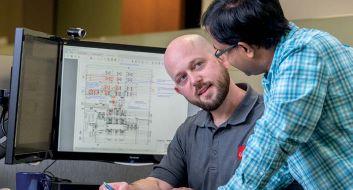




Ulteig provides expertise throughout North America in the Lifeline Sectors® of power, renewables, transportation and water.

Where would we be without manufacturing?
It is an answer that isn’t exactly quantifiable except in the extreme, and we don’t want to go there. Instead, the manufacturing industry plays an important role in the region, as it does across the country and many parts of the world.
In this issue, Prairie Business highlights the manufacturing industry and some of its regional players. A quick snapshot of the industry:
·South Dakota exports $1.38 billion worth of manufacturing goods per year, according to the South Dakota Governor’s Office of Economic Development.
·About 14% of Minnesota’s GDP and 40% of all Minnesota jobs, either directly or indirectly, come from manufacturing.
·North Dakota produces about $4 billion worth of manufacturing every year, David Lehman, advanced manufacturing business development manager with the North Dakota Department of Commerce, told Prairie Business.

“Manufacturing has been down slightly (in North Dakota) but the downturn has primarily been due to soft demand for manufactured goods for the agriculture and energy industries,” Lehman said. “There have been some disruptions which have impacted North Dakota manufacturers during the COVID-19 pandemic, but these have been largely temporary. Some of these disruptions include short term shutdowns amid COVID-19 exposure within the operations, supply chain disruptions as a result of manufacturing shutdowns and general transportation logistic issues outside of North Dakota. That being said, it appears manufacturing in North Dakota will be stronger in the future as a result of the pandemic.”
That latter part – that manufacturing will likely be stronger in the future – is good news for the state and for the regional economy.
Let’s cross our fingers, get over the pandemic, and see those positives come to fruition.
This issue of Prairie Business also takes a look at how construction and engineering firms are using drones in their work. It’s not just for marketing purposes anymore, and over the next five years or so experts say there will likely be more changes and trends with how companies use unmanned aircraft. We also have a story about the impact the coronavirus pandemic has had on regional agricultural workers. It has been the “two” in the one-two punch that farmers have been hit with over the past few years.
There’s more to read, of course, and so keep turning the pages and let us know what trends you’re noticing in your own industry.
Until next time, Andrew Weeks
I look forward to hearing from you at aweeks@prairiebusinessmagazine.com or 701-780-1276.
375 2nd
Grand Forks, ND 58203.
are available free of charge. Back issue quantities are limited and subject to availability ($2/copy prepaid). The opinions of writers featured in Prairie Business are their own. Unsolicited manuscripts, photographs, artwork are encouraged but will not be returned without a self-addressed, stamped envelope.
SUBSCRIPTIONS
Subscriptions are free www.prairiebusinessmagazine.com
ADDRESS
We takeapersonalinterestinthe workbeing donearoundus.Andattheendoftheday, we’re

Civil &MunicipalEngineering &Planning

Water &WastewaterEngineering
TransportationPlanning &Engineering
Bridge&StructuralServices
AviationServices

Water ResourcesEngineering
Planning &UrbanDesign
LandSurveying

GeographicInformationSystem
Project Funding &Financing
Marco’sAudioVisualsolutionscan makeyourtechnologythestarof everypresentationandconference call.Findoutwhatyourtechnology couldbesayingat marconet.com.
Bolton-Menk.com
“They’vegotthemagic touchthatmakesme lightup aroom.”
It’s been said that necessity is the mother of invention, and it’s a statement that seems to hold true for WCCO Belting Inc.
The Wahpeton, N.D.-based company is a progressive rubber belting manufacturer that has contributed not only to the region’s economy, but the state and country’s export market.
In the process it has followed trends, created a few new ones, and has always looked to the future to see how it may impact the industry even further.
“We really had to embrace innovation and we’re crazy about rubber products,” Rod Koch, the company’s vice president of operations, told Prairie Business during an interview in June. “That’s been our secret for 66 years.”
It is companies like WCCO Belting that make North Dakota stand out as a progressive, forward-thinking state.
Adding some numbers into the mix, manufacturing in the Peace Garden State produces about $4 billion worth of product every year,
according to Dave Lehman, advanced manufacturing business development manager for the North Dakota Department of Commerce. That equates to about 7% of North Dakota’s total gross state product (GSP) “Numbers aside,” Lehman said, “our manufacturers are a critical support system for other industries in the state such as agriculture and energy.”

But manufacturing has taken some tough hits in the upper Midwest over the past several months, in part because of the pandemic but also because of other challenges that have creeped into the industry, some of which, Lehman said, may have long-lasting effects.
Manufacturing employment was down by almost 9,000 in Pennsylvania over the past year and 6,800 in Wisconsin, according to an article by the Washington Post, while Minnesota was among three states that lost factory jobs over the same time period.
The pandemic has only added to the burden of a stressed industry. In South Dakota, manufacturing saw a 5.3% decrease from May 2019 to
May 2020, according to the state’s Department of Labor & Regulation. In 2019, some 45,200 people were employed in manufacturing in South Dakota, but in May 2020 that number was down slightly to 42,800.
“South Dakota was lucky to not have seen as large of disruptions as some states did regarding the stay-at-home requirements, so South Dakota manufacturers are receiving recognition for being a reliable source of supply,” said Don Cuperus, director of South Dakota Manufacturing & Technology Solutions, an organization that was formed in 2010 in an effort to grow the state’s manufacturers.
Similar things could be said of North Dakota. “Prior to the pandemic, manufacturers in the state were heavily focused on increased automation in their facilities. This ranged from increased back office automation to CNC and robotics installations,” Lehman said. “There was also an extremely heavy focus on workforce. This was due to North Dakota maintaining one of the lowest unemployment rates in the nation. To combat this, manufacturers were focused on workforce efficiencies and aggressive hiring practices.
“While we are still seeing these trends continue, as a result of the pandemic there is additional focus on employee safety and onshoring parts used in our manufactured goods. … Most of the trends we are seeing are centered around employee safety and product procurement.”
Such is the atmosphere in which WCCO Belting finds itself today.
Though the company has adjusted out of necessity because of the pandemic, such as implementing more safety protocols, Koch said no one at the facility has tested positive for COVID and the company has stayed true to its priorities: employee safety and wellbeing, strong client relations, high-end manufacturing and innovation.

WCCO Belting’s genesis has roots in the 1950s when Ed Shorma started a shoe-repair business. In the course of events and circumstances, his skills led to a number of other ventures and Wahpeton Canvas Company was formed, better known as WCCO, which today produces rubber belting products for equipment manufacturers and distributors at home and abroad.
It’s best known for its work with the agriculture sector but also
does work for a number of other equipment manufacturers. The company’s made-to-order belts are sold all over the world, with the RAPTOR – a high-end use belt – being its most popular. The RAPTOR was introduced in 2012, Koch said, but noted a second-generation belt is on its way that will include features to increase efficiency.
“We pride ourselves on designing custom solutions for various industries,” he said, noting the RAPTOR is the “gold standard” in belts for equipment manufacturers. “I think pretty much every major equipment manufacturer in the world uses it. We really like to focus on the technological advancements in our belts. We have proprietary compounds, proprietary fabrics, proprietary constructions that are patented.
“The way we do things is just a little bit different than everybody else. … We have a lot of proprietary processes, including our curing cycles. It makes us offer a superior product.”
Koch describes “value innovation” as “function over cost” and said “a lot of customers design a new product and then go to a catalog and buy a belt for it. It may work but it’s not really optimal, and so we love it when a customer calls and says they have a new application, or even an existing one, and need a custom solution for it. That's where we really shine. … It's mind boggling to have a $100,000 piece of equipment not functioning right because of a $50 belt that fails.”
Staying ahead of the competition is something in which the company takes great pride. Its success has, in part, been because of its innovative playbook.
“I think it's the ‘necessity is the mother of invention’ mentality that's been here since day one,” Koch said. Customer relations from the Heartland to foreign lands are paramount. “If somebody has a challenge, we love to solve it with them. That's how you form your partnerships and it’s pretty key to what we do.”
Of course, other manufacturers in the upper Midwest also have innovative playbooks and add to the export market while affecting business at home.
Spectrum Aeromed has been manufacturing medical transport equipment for aircraft since 1991, when it opened in Wheaton, Minn. It moved to Fargo, N.D., in 2007 and continues to provide state-of-thecontinued on page 15



continued From page 13
art transport equipment for the aviation industry.
Michael Gallagher, vice president director of production, said the company employs about 26 and cannot claim it has a lot of customers in the region. But, like WCCO, it has many clients in other parts of the country and all over the world, including an office in Germany.
“In order for the company to grow and continue to expand we've had to grab the global market in aviation,” Gallagher said. ”It's pretty easy to do that because we’re already playing in that industry. … I think export, for us, has been a natural growth of the business. … It's a very niche business that we're in; there aren't a lot of companies and not a lot of competition (that manufacture transport equipment for air ambulances). We have probably one main competitor in the U.S. and a few in Europe.”
The company’s overseas relations remain strong, he said, but the past few months have been tough for sales reps to meet with foreign clients like they are used to doing because of travel restriction due to the pandemic.
“Those are not easy things to overcome in the short term,” Gallagher said. “How long is this going to last? … If you have a supply chain that runs through China, that’s a very difficult thing to deal with right now.”
It’s easy to blame COVID-19 for challenges that some manufacturers are facing, but other difficulties in the industry surfaced before the pandemic.

One of the more common challenges, according to Cuperus, with the South Dakota Manufacturing & Technology Solutions, is finding and growing a skilled workforce.
“One of our focuses at MTS is helping companies upskill their employees and deploy automation to become more productive and an employer of choice,” he said. “Most employees enjoy the chance to engage in new things and technologies. There may be reluctance initially but it is easily overcome when they see the positive effects on their jobs.”
He said one of the concerns his office hears is leadership development in the industry. Something MTS has done to help address the issue is developing a training program called Lean Leadership for Supervisors. As Cuperus described it, it’s “a study of leadership intertwined with lean concepts for supervisors and future supervisors to learn so that they can lead at an optimal level.”
During each session different leadership topics are discussed and new tools are introduced. “The small peer group setting facilitates meaningful conversation and group learning for the new supervisors,” he said. “Our goal is to challenge participants to
think differently about situations, create new habits for growth, and be more impactful in their position.”
Objectives of the program include determining what leadership style to apply and when to build a culture of engagement; navigating difficult conversations with team members; communicating with clarity, credibility, and confidence; combining goal-setting and accountability to foster growth; and applying Lean concepts to everyday activities and responsibilities to increase efficiency.
Over at Spectrum, Gallagher said the company’s leadership is intact and the manufacturer has remained steady without a lot of turnover, noting a number of its employees moved with it when the company relocated to Fargo in 2007.
Being rooted in the region, even when clients may live in other parts of the country or world, is a big dividend for the communities in which they work and operate.
“I think the biggest thing is that we provide a lot of employment for the local community,” Koch said of WCCO Belting, noting the company employs around 200. “We try to hire local folks.”
Besides manufacturing its own niche products, Spectrum Aeromed outsources to local businesses depending on its needs, which could be a painter or a business that specializes in machining parts.

“Those are all sourced to small businesses in this area,” Gallagher said, explaining that the company has partnerships with a number of businesses in Minnesota and North Dakota. It plans to stay rooted in the Red River Valley.
“We have suppliers all over but for the most part we've always tried to cooperate with other small businesses that are like us, and we support them and grow and work with them to improve our products and processes. … We can do that with anybody in the US or the world, but to work with somebody local that has the same values that we do, it’s just so much easier for us to work with them and get things done. … We have a long history here in the Red River Valley and it's been a good environment for us to operate in.”
He said he views the future of manufacturing in the region, and especially North Dakota, as having a bright future, despite current and perceived challenges.
Technology also will play a part in the industry’s future, thus the need for companies to be continuously innovating.
“It’s hard to say exactly what will happen over the next five years, but I feel manufacturing will continue to experience significant growth,” Lehman said. “Technology will play an increasingly substantial role. Most notably in two areas: one being automation of processes and the other being a greater diversification of cutting-edge product offerings.”
Using drones for business purposes may not be a new trend, but what is trending is that more engineering and construction companies are licensing their own pilots.
Apex Engineering Group, for example, started using drones about three years ago. Drones there were first used mostly to record pictures and video for marketing purposes, providing images for press releases and other promotional material. But the company’s focus on using drones has changed over time, according to civil engineer Brent Muscha, just as it has for many engineering and construction companies.
Apex, which has offices in three locations in North Dakota and one in Minnesota, has found drone use an applicable and efficient tool to survey projects and track progress. What’s more, the drones it flies are piloted by its own in-house staff.

“It’s developed in the last few years as we’ve gotten a little more savvy with what we’re doing,” said Muscha, who is based in Fargo, N.D. He said Apex does not hire specifically for pilot positions but instead surveyors and engineers who, on top of their primary duties,
would like to take on the additional responsibility of piloting drones when the need arises.
That need arises more frequently these days.
Apex started with two pilots – Muscha and a colleague – but it now has five licensed pilots. And while the company still uses drones to capture images for marketing purposes, there’s great client appeal using them to track project successes.
“We’ve gotten into the habit of using drones more in construction projects. It actually has become somewhat of a routine,” he said.
Capturing images from a drone’s-eye view of the different phases of a project, which the company sends to clients, is something clients seem to like. That’s especially so during the coronavirus pandemic, when it may be difficult for people to go onsite to see a project or if they’re uncomfortable doing so.
It helps “give them an overview of how things are progressing without actually having to be on site,” he said. “I think it gives them a little better feeling about what actually is being done. It’s kind of
hard, when you’re on the ground, to see some of the things that are happening (with a project). You don’t get quite the same feeling of scale as you do when you see it from a drone photo from a couple hundred feet high.

“When you’ve got a street project or something like that and all of a sudden, over a period of a month or so, you’ve got four blocks in the street completely reconstructed, you just get a better idea of the scale of the work that’s been done. I think that’s what they appreciate.”
Construction planning, management and inspection are among the leading uses of drones commercially, according to Dan Edmonson, founder of Drone Genuity, based in Hopkinton, Mass. He works with companies throughout the United States, including contract work in South Dakota. He said that year-over-year adoption of aerial data and analysis suggests that construction leads all other industries at 238% growth.
In this sector, drones are used for surveying, digital mapping and topography, soil analysis, inspections and the monitoring of projects. And just as relevant, drones are good for security monitoring, documenting and sharing progress with stakeholders, and providing unique experiences when social distancing won’t allow in person visits – some of the ways in which Apex uses them.
“Our pilots can and do perform all of these functions on a weekly basis,” Edmonson said. “One of our most popular requests is for construction progress photos. We are seeing more and more requests

for thermal imaging for energy conservation, 3D renderings and finished project marketing videos. As more companies use drones to reduce on-site staff and become more comfortable with the technology, we continue to see more interest and more unique projects.”
Dave Bowen, technology innovation manager with Ulteig, said the company over the years increased its drone use with projects. For example, drones are helpful in surveying the right-of-way for transmission lines before a structure can be built.
“In this case, that actually requires the use of LiDAR (light detection and ranging) on a drone because of the need to punch through vegetation, which may lie within that right-of-way, to get a precise topographical model that we can pass to the engineers who do the actual designing of the transmission line,” he said. “So that’s one example. Another example is using the same type of approach for surveying but instead of using LiDAR we’d use photogrammetry. This could be done, let’s say, for one of our transportation clients. … There’s a ton of applications on the surveying and mapping side.”
Bowen said he believes drones are being better utilized by firms and that “there’s a ton of interesting applications, whether that’s a visual and thermographic survey substation or you’re doing a thermographic analysis of a solar farm to check for instances of potential damage to PV panels or what have you; or if you’re doing wind turbine inspections.”
Bowen is based in Colorado but said Ulteig, an engineering consulting company, has several offices in the region. Drones mostly are used with its surveying team, he said, noting the unmanned craft will continue to play a role in Ulteig’s future.
continued on page 19
 1: DAVE BOWEN, TECHNOLOGY AND INFORMATION MANAGER WITH ULTEIG, SAID DRONES WILL PLAY AN IMPORTANT ROLE IN THE FUTURE PROJECTS AT ULTEIG. IMAGE: ULTEIG
2: PICTURED IS A DRONE’S-EYE VIEW OF A ROAD PROJECT FROM APEX ENGINEERING GROUP IMAGE: APEX ENGINEERING GROUP
1: DAVE BOWEN, TECHNOLOGY AND INFORMATION MANAGER WITH ULTEIG, SAID DRONES WILL PLAY AN IMPORTANT ROLE IN THE FUTURE PROJECTS AT ULTEIG. IMAGE: ULTEIG
2: PICTURED IS A DRONE’S-EYE VIEW OF A ROAD PROJECT FROM APEX ENGINEERING GROUP IMAGE: APEX ENGINEERING GROUP
4-8: DRONES ARE GREAT TO REVIEW PROJECTS AND CLIENTS SEEM TO LIKE BEING ABLE TO DO SO WITHOUT BEING ON SITE, ACCORDING TO COMPANY CIVIL ENGINEER BRENT MUSCHA. THESE PHOTOS DEPICT THE PROGRESS OF A PROJECT ALONG MAIN AVENUE AND 2ND STREET IN FARGO. IMAGES: APEX ENGINEERING GROUP






9: BRENT MUSCHA, A CIVIL ENGINEER WITH APEX, SAID DRONES HAVE INCREASINGLY BECOME A MORE IMPORTANT TOOL FOR THE COMPANY. IMAGE: APEX ENGINEERING GROUP
10: FRANK REGAS, OWNER OF ASCENDING INNOVATIONS IN SIOUX FALLS, S.D., SAID HE KEEPS BUSY WITH CONTRACT DRONE WORK BUT NOTICES THAT MORE ENGINEERING FIRMS AND CONSTRUCTION COMPANIES ARE GETTING THEIR OWN PILOTS. THAT MAY BE GOOD NEWS FOR THEM, HE SAYS, BUT NOT SO MUCH FOR GUYS LIKE HIM. IMAGE: ASCENDING INNOVATIONS

As more companies become better at drone usage and develop their own pilots, the more they help shape the growing trend: forget contract work and fly yourself.
Frank Regas, owner of Ascending Innovations in Sioux Falls, S.D., said he has an engineering background and contracts out to construction and engineering firms all of the time. But he does notice how more companies are getting their own pilots. That’s good for them, he said, but maybe not as good for him.
“They can get it done pretty efficiently, especially engineering firms and construction companies.” he said. “That seems to be the trend. On the flip side, it means less work for guys like me.”
Construction and engineering companies, which typically use drones for photogrammetry and video, are the main players that use drones for business, according to Edmonson. Besides companies developing their own pilots, they should also invest in equipment that can grow with drone technology. And if they haven’t yet invested, he said, they should consider doing so in the foreseeable future.

A likely scenario is that construction leaders will likely “fly systems that can carry multiple sensors, whether it’s LiDAR to cut through vegetation or thermal to complete building inspections,” reads an article on Inside Unmanned Systems. “Sensors will become more accurate, and drones will become even more common.”
Drone usage among construction and engineering firms will only trend upward. As it does, and as companies invest in their own pilots instead of contracting them, Edmonson said it opens another door for UAS businesses, such as Drone Genuity and its training programs.
“Flying a drone isn’t an easy task in and of itself and combining that with capturing images makes the task trickier,” he said, noting Drone Genuity is beginning to consult with companies who have their own fleets and pilots. “In the future it will be interesting to see if companies continue to contract this type of work, take it in-house, do both, or even grow and try to provide services to other companies.”
Edmonson said over the next five years or so more food and beverage and hospitality and tourism industries will likely integrate drones in a variety of ways.

“Health care, emergency and disaster response have also seen drone integration,” he said. “We are seeing increases in agriculture and insurance with the return of warm weather and expect those trends to continue.”
Regas said drones’ potential hasn’t yet been fully realized. He expects that as technology becomes smarter and more efficient, there will be more autonomous drones. Despite companies developing their own pilots, something that may hinder the number of contracts he and other UAS businesses may receive, Regas is excited to be part of a forward-thinking industry. He looks forward to its future.
“I think (things will happen) that a lot of us can’t really think of right now,” he said.
Shelly Ziesch says she likes to stay humble. She and her husband are ranchers in Kidder County, N.D., and she won’t say on the record how many head of cattle they keep (that’s the humility at work). She also said she’s never one to complain.
But for Ziesch — and for farmers and ranchers around the upper Midwest — the last two years have brought a one-two punch. First came a trade war with China, and then came the coronavirus pandemic. Both have meant havoc for markets.
"We've gone from one thing to the next. It's been a nightmare for marketing,” Ziesch said, who also grows corn, wheat, oats and soybeans to feed her cattle, often selling any surplus. "It's been difficult — and then in our region of North Dakota, 2017 had a drought, 2018 had a drought, 2019 we flooded, and now here in 2020 we've had coronavirus and we're drying…in our little area here. It's just been awful for farming and ranching."
Upper Midwest farmers are doing their best to keep pace with current events, but recent years have made it difficult — the coronavirus pandemic being perhaps the biggest hurdle for many to clear. Around the country, the virus has meant a radical change in how consumers get their food, shuttering restaurants and catering services and the like. Suddenly, some farmers are left with big surpluses — or plunging prices.
That’s precisely the dynamic Ziesch is faced with as prices for cattle fall.
“We just really want our markets back — but in all reality, if this sticks around the way it has been, we're going to need assistance,” Ziesch said, adding that it might take years for the agricultural economy to recover from the pandemic and the trade war.
Mark Watne, who heads North Dakota Farmers Union, points out that the same dynamic often puts farmers and ranchers in a cruel bind: if they want to make a good profit, they need to increase production. But as others around the country do the same, markets just get flooded further.
"It's setting a stage where there is not a huge opportunity to see price increases for a long time, simply because we've built up this inventory,” he said.
Those concerns are common around the country and have been an ongoing concern for months — but they’ve resonated especially in the Midwest. The Smithfield Foods meatpacking plant in Sioux Falls,
Cattle prices, like lots of other commodities, have seen a big price swing since the early spring, when coronavirus scrambled demand and markets. Shown below are some of the lowest values on cattle in years.
S.D., was the center of a local outbreak of the coronavirus, shining a light on pandemic problems not just at the dinner table, but in the supply chains that help farmers get their food there. The company has now drawn the scrutiny of federal workplace regulators, the Sioux Falls Argus Leader reports, and is entangled in a legal battle over what happens next. That, in turn, comes after farmers in the state were already dealing with remarkable 2019 flooding, putting further pressure on growers.
The same is true of Minnesota producers. Dave Mensink, who raises hogs in the southeast of the state, told CBS News in June that he stood to lose six figures on falling prices.
There are a few bright spots, if they can be called as much. In a recent survey from The Purdue Center for Commercial Agriculture, farmer optimism was looking up from deep, deep lows in April and May. The number of farmers who thought their performance would be worse than last year fell from the mid-50% range into the low

American farmers are nervous about farm profitability this year. Below, farmers respond to a survey question: “How worried are you, if at all, about the impact of the coronavirus on your farm’s profitabilty this year?”
40% range — though 27% remained “very worried” about their farm’s profitability, and only 12% expected financial improvement over last year.
And compared to a year ago, well more than 50% of respondents said they had lower expectations for purchasing farm equipment than a year ago — an indication of the ripples that are likely to spread through the economy as a result of shifts in the food and farming market. And in some cases, farmers’ chief concerns go well beyond coronavirus. Tyler Stafslien, who grows soybeans, spring wheat and the like on a farm near McCody, N.D., said his biggest concern is how coronavirus has taken attention away from international trade concerns.
"For me, again, to normalize trade relations with China is very important for the financial health of my family and my farm in the future,” he said. “To take the spotlight off of that is detrimental to me financially. It continues the issues we've been having since the beginning of the trade war, and I don't see an end in sight."
But Stafslien and others keep their concerns in perspective. After all, they still have jobs — which is more than workers in plenty of other economic sectors can say as retail, restaurants and the like have been ravaged with layoffs and shuttered businesses amid falling foot traffic.
"I feel fortunate, because I know there's a lot of people across this country, whether it's the restaurant worker in DC or bartender in LA (who are struggling),” he said. “To have the open space and the relative comfort of living in an area that's not so populated, I know I'm lucky."

 By Matthew Dunham
By Matthew Dunham
Every day tried-and-true corporate methods are being tested, requiring business strategies to pivot while keeping culture constant. While leadership has spent the last few months reassessing and restructuring their businesses to survive recent economic challenges, and while workplaces are finally returning to some degree of normalcy, the virtual workplace will continue on.
While large businesses have long operated virtually, the heartland and small businesses just recently went over the proverbial waterfall of remote working. Here are keys to cultivating corporate culture in an increasing virtual and remote age.
Workplace culture is synonymous with recruitment and retention. When culture is predominantly virtual, void of carefully-crafted workplaces, how is it cultivated? Airbnb has become a household name and revolutionized the tourism and hospitality industry, challenging the long-standing companies to critically assess their virtual strategies.
Airbnb’s founder and CEO Brian Chesky has said, “Culture is simply a shared way of doing something with a passion.” The challenge is keeping employees passionate about the work they are doing and the value they are providing when they are working independently. Cultivating this passion requires keeping a close eye and pulse on the
MATTHEW DUNHAM.process - which is why my company, JLG Architects, recently conducted a company-wide survey to assess corporate culture while working nearly 100% remotely.







When understanding how to cultivate corporate culture, we must first look to the values of the company. “You cannot deliver value unless you anchor the company‘s values; values make an unsinkable ship,” stated Indra Nooyi, former CEO of Pepsi-Co. No organization or business is big enough to have conflicting messages. In fact, the bigger the business, the simpler the message. It is often smaller businesses and organizations that struggle to clearly define, in simple terms, their values and set realistic goals for fostering a healthy culture.
Values are not just for letterheads and PowerPoints – but rather serve to inform a living, active, exciting business model and company culture. On the leadership level the key is to know who you are. Anchoring is always intentional, just as before you cultivate something it needs to be planted. It is important to know how leadership’s perspective can vary from others in the company who are not in as many vision-minded conversations.
Ask yourselves honestly: Who are you, really? What are the elements of your culture that you cannot exist without? This is key so that regardless of working within the confines of an office or virtually, your workplace corporate identity is defined. The JLG Architects survey results indicated 67% of employees thought the culture had
maintained or improved over the previous three months of working entirely remotely. This is attributed to longstanding defined values, culture and mission, which transcended virtually.



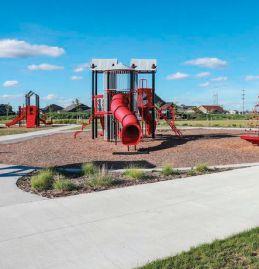

Everyone in the company contributes to the culture. Every level of your organization should know and express your values. Communicating the values clearly and tangibly to every employee is the next key step. When you think you have over-communicated about it, you have likely just begun.

It is important to remember everyone wants to belong and contribute. It is easier to categorize some people, roles, or personality types as less interested in engaging, contributing, attending events, or impacted by workplace culture. While there always will be employees disinterested in events and quieter about values, it has nothing to do with rank, role or personality type – culture encompasses everyone, and management should offer a variety of opportunities for staff to engage in and communicate the culture.
A JLG survey question based on personality types – introverts vs. extroverts – indicated no correlation between personality type and views of corporate culture while working remotely. Sixty percent of people who stated that the firm culture improved while working remote identified themselves as extroverts. Additionally, with no correlation to personality type, 12% of employees (33% introverts, 25% extroverts and 42% both) indicated feeling that their value to the company had decreased since moving online.
continued on page 24
The evolution of workplace design is moving away from the notion of one-size-fits-all towards a much more flexible and organic model. Being able to adapt and control your own environment is paramount – not just lighting, temperature, and ergonomics, but noise and the distraction of spontaneous drop-in colleagues.
Likewise, virtual and remote work is equally impacted by one’s freedom to find an appropriate working environment, home office, coffee shop, or kitchen table. This flexibility and control over the personal working environment will likely be one of the longest-lasting elements to influence people after COVID-19, as everyone has experienced the benefits of agility and flexibility of working remotely. People will be less likely to return to the office without that similar flexibility and customization of their environment.
The survey results found that of the 26% of employees that stated their contribution and value improved since remote/virtual work, 77% attributed it to “greater control over their working environment” and “ better connections with staff beyond their normal office team members and daily routine.”
The best way to cultivate culture is through meaningful relationships. We often separate personal life and work. However, sports and entertainment investor and billionaire entrepreneur Robert L. Johnson writes, “Business is personal … make your friends before you need them.” Nothing replaces face-to-face interactions, a smile, and a strong handshake. Our increasing virtual age means each of us must become more intentional about connecting with others.
Author of Designing for How People Learn, Julie Dirksen writes, “I have this really amazing teacher. … Nobody ever says, ‘I had the most amazing textbook’ or ‘there was this really great PowerPoint.’” It sounds like a contradiction, but the more virtual we become, the more people-focused we must be. In the upper Midwest face-to-face communication is part of our fabric and connecting digitally is different than connecting in person. When working virtually, it is important to provide multiple opportunities, moments, and pauses to allow people the opportunity to connect.
Prior to the impact of COVID-19, JLG hosted weekly social hours and lunches at our locations, in addition to many other internal and community activities. Following the shift to completely virtual work, the company’s survey found that 42% of employees still considered virtual social hours and lunches to be how they best connected to the company’s culture. This is because they could engage with a larger number of employees in a relaxed environment without an agenda. Additionally, what connected people most was standard “medium size” meetings and weekly staff meetings (24%) – all larg-
er-group activities. Finally, what best connected people was “calling co-workers just to check in,” essentially getting coffee virtually (18%), and having cameras on while meeting virtually (15%).

Cultivating corporate culture in the virtual and remote workplace is not a deviation from the values of the company – it is an extension. Normal relationships take work and long-distance relationships take even more intentional work. With the right strategy and opportunities, company culture can maintain and thrive both virtually and remotely. That said, nothing replaces the value and importance of gathering in person to nurture your company.
Know when and what meetings and annual events are important enough to pull everyone together. The more virtual and remote the workplace becomes, the more personal it must also become. The tools of every profession and industry are exponentially reliant on technology, while the users will always be individuals reliant on community and vibrant culture.
Three join Houston Engineering FARGO, N.D. • Houston Engineering Inc welcomes Justin Kassen and Victor Gronvold to its Fargo team, both as Engineer I.
Kassen will support water resources and municipal-related projects by preparing detailed engineering analyses, technical reports, and design plans as well as collaborating with CAD designers, engineers, and subcontractors. He is a native of Goodhue, Minn., and earned his bachelor's degree in civil engineering with minors in mathematics and psychology from North Dakota State University.
Gronvold will support water resources-related projects by preparing detailed engineering analyses, technical
reports, and design plans as well as collaborating with CAD designers, engineers, and subcontractors. He is a native of Rugby, N.D., and earned his bachelor's degree in civil engineering from North Dakota State University.

Taylor Foley has joined HEI at its Minot, N.D., office as a Technician I.



Foley will work in the field and in the office providing construction observation and CAD drafting services along with some survey and construction staking.
He is a Minot native and earned his associate degree in civil engineering and land surveying from the North Dakota State College of Science.
SPONSORSHIPS aredesigned to assistbusinesseswith RECRUITING and RETAINING qualifiedemployees inindustriesthatare experiencinga workforce shortage.
Sponsors formanagreementwithacurrent orfutureNDSCS studentthatprovides financialsupport forthe student’s education, in return forfutureemploymentwiththe sponsor.
To bematched with a future employee and learnmore about StudentSponsorships,visit NDSCS.edu/Sponsorships
Justin Kassen Victor GronvoldApex Engineering Group welcomes seven new team members
FARGO, N.D. • Apex Engineering Group has welcomed seven new team members to its growing staff. The newest members include the following:
Kris Knutson joins Apex as a design engineer in the Fargo, N.D., water group. He has 18 years of experience, most recently working for Moorhead Public Service Water Utility as the water division manager. Knutson has a master’s degree in chemistry from the University of Minnesota Duluth and recently completed his second master’s in civil and environmental engineering from North Dakota State University.
Corey Johnson joins the Fargo wastewater group as a graduate engineer after working for the company as an intern for six months. He recently graduated from North Dakota State University with a degree in civil engineering.
Levi Clagett is a graduate engineer working primarily with the water resources team in Bismarck, N.D. He recently graduated from the University of Mary in Bismarck with a bachelor’s degree in civil engineering. His previous experience was with the City of Bismarck Engineering Department as an intern.
Kim Fletschock joins Apex as its new financial accountant located in the Fargo office. She has 20-plus years of accounting experience, most recently working for Meinecke Johnson Co.
Lucas Borgerson recently graduated from North Dakota State University with a bachelor’s degree in civil engineering. He has recent experience working as a transportation design intern with KLJ Engineering. He joins the Municipal group in Detroit Lakes as a graduate engineer.
Samuel Ruppert earned his master’s degree in civil engineering from South Dakota State University in Brookings. He joins Apex’s municipal group in Detroit Lakes, Minn., as a graduate engineer. Ruppert had been working with the city of Brookings Engineering Department prior to joining Apex.




Tyler Madsen joins Apex as a graduate engineer in the Detroit Lakes municipal group. He has a degree in civil engineering from the University of North Dakota, most recently working for the North Dakota Department of Transportation before joining Apex.
HEI welcomes new senior hydrogeologist




SIOUX FALLS, S.D. •
Tim Kenyon has joined the team at Houston Engineering Inc. (HEI) as a senior hydrogeologist. With more than 35 years of experience, Kenyon will lead HEI’s hydrogeology and waste management services. He is a long-time resident of Madison, S.D., and earned his geology and geological engineering degrees from South Dakota School of Mines and Technology.
Kenyon joins Brad Peschong, Mark Fodness, and Karleen Kurvink in the company’s Sioux Falls office. All of them previously worked together at Leggette, Brashears, and Graham (LBG) for several decades and were part of many collaborative HEILBG projects completed during the companies’ years of partnership.
Kenyon is a key piece to this strong team with vast experience and knowledge in the waste management industry. HEI is excited to bring this talented team together again to serve its clients’ environmental needs enhanced with additional engineering services all within one firm.
Architecture Incorporated hires new architectural graduate

SIOUX FALLS, S.D. • Architecture Incorporated recently hired Colby McGinley as an Architectural Graduate in Sioux Falls, S.D.
McGinley graduated in May with his Master of Architecture degree from South Dakota State University. He also has a bachelor’s degree in industrial technology with a specialization in construction technology.
SIOUX FALLS, S.D. • KLJ, an engineering firm, is proud to welcome Erik Fitzgerald to its Sioux Falls, S.D., office. Fitzgerald joins KLJ as an engineer in training in the civil transportation department. He earned a bachelor’s degree in civil engineering from North Dakota State University.
DCN hires new team member


BISMARCK, N.D. • DCN (Dakota Carrier Network) has hired Troy Walker as director of sales and marketing in its Bismarck office. In this role, he is responsible for all DCN sales channels, management of commercial and wholesale sales teams, and oversight of the company’s marketing and communications efforts. Additionally, he is part of the organization’s executive team. Walker has more than 27 years of experience in information technology including service desk, application development, IT finance and cybersecurity. In addition to a strong IT background, he is proven in building and maintaining relationships with customers as well as team members.
A Mandan, N.D., native, Walker earned a bachelor’s degree in computer science from North Dakota State University and is a graduate of the Harvard Business School’s Executive Education Delivering Information Services program. He is a member of the Church of Ascension, board member of BSC CyberCon, and president of the Bismarck High School Football Boosters.
What initiatives has your company implemented to help build a work-life balance for its employees?
 Noah Fischer Human Resources and Organizational Development Manager EAPC Architects Engineers Fargo, N.D.
Noah Fischer Human Resources and Organizational Development Manager EAPC Architects Engineers Fargo, N.D.



We are proud of our culture at EAPC and continuously look for ways to improve it for the health and well-being of our employees. We recognize that our employees’ lives outside of work is incredibly important to them, whether it is their family, pets, hobby, life circumstances, or the need to just recharge. The challenge with work-life balance is that rarely anything in life is in balance, but rather intertwined as a constant push-pull. Our leadership recognizes that production, performance, and employee retention improve when we make concerted efforts to support our employees and what is important to them outside of work.
Some specific initiatives we have implemented include deploying an action team to review programs and processes on how we on-board and assimilate new employees, surveying current employees on our corporate culture on what we do well and how we can improve, and requiring each manager work with their employees to create a career development plan. These initiatives are creating conversations, building rapport, and informing managers on what our employees need to be supported both at work and at home. Our goal is that the cumulative effect will position both the employee and the firm to be successful.
“The challenge of work-life balance is without question one of the most significant struggles faced by modern man.” – Stephen
CoveyAt Architecture Incorporated we realize our employees are our greatest resource. Now more than ever we are faced with the challenges of juggling demands of our private lives and our careers. We strive to create an office environment that allows our firm to interact with each other in a collaborative and productive way. We take advantage of the latest technology, which allows us to provide flexibility in how we work as a team. Whether working together in the office or collaborating remotely, we are able to meet the needs of our clients.
We also believe that family comes first. Offering a flexible work schedule allows our staff to make adjustments as needed, especially during these unprecedented times. By supporting our staff in their personal lives, we in turn have staff who are vested in the success of the firm.
Sarah Aldinger Principal Architect Architecture Incorporated Sioux Falls, S.D.


At FCCU, we think of our staff as family. As such, our company culture puts family first because we understand how important a work-life balance is for the overall health and wellbeing of our staff. In addition to generous Paid Time Off (PTO), we’ve implemented flexible schedule initiatives whenever possible to accommodate appointments, kids’ activities, family time, etc. where staff can make up time later. Furthermore, during the initial outbreak of COVID and with schools closing, we understood this would put many of our families in the difficult position of choosing between the need to work and their family. To combat this strain, we immediately made changes to allow staff full access to their Extended Illness Bank (EIB). This bank of up to 30 days was initially designed for an employee long-term illness, but we realized that the pandemic was an extreme situation that needed a quick response to alleviate their concerns about lack of daycare, home schooling, underlying health conditions, etc. We also allowed those employees with limited PTO accruals to go up to 80 hours negative during these extreme conditions to ensure that no one missed a paycheck.
Overall, throughout our company, from our Board of Directors on down, we constantly try to be understanding that ‘life’ happens and know that happy employees are ones with a healthy work-life balance.
Steve Schmitz President/CEO First Community Credit Union Jamestown, N.D. Jeremy Elbert Senior Vice President, Financial Advisor and Branch Manager
Jeremy Elbert Senior Vice President, Financial Advisor and Branch Manager

 D.A. Davidson West Fargo, N.D.
D.A. Davidson West Fargo, N.D.
While we have always had tools in place for strengthening work-life balance, D.A. Davidson’s leadership is especially cognizant of the importance of balance during the pandemic, when we are more isolated and face additional stress and health threats.

A major tool is our wellness program, which encourages associates to care for themselves physically and emotionally and provides helpful direction. The program includes fitness challenges, a health-information newsletter, and incentives for personal improvement. We also have many offices that have designated wellness champions who help others with work-life balance.
D.A. Davidson’s Employee Assistance Program covers a range of mental health issues, such as abuse, depression, grief, stress, relationship and parenting problems, workplace issues and more. In addition, you can be connected to professionals to discuss financial and legal issues.

We offer a generous vacation and holiday schedule, and we schedule familyoriented events focused on having fun, from holiday events to celebrating milestones. Our company is equally generous with leaves of absence, allowing time off for children’s school activities, adoptions, maternity and paternity leaves and more.

Probably most effective, however, is a leadership environment that encourages everyone to take time for themselves. We work to assure everyone that it’s critical to take time away from work responsibilities.

Labor productivity declines were widespread among manufacturing industries in 2019, with decreases in 54 of the 86 industries studied, according to information from the U.S. Bureau of Labor Statistics in July. Of the 51 industries in durable manufacturing, 31 had productivity decreases in 2019 led by a 7.8% decline in the productivity of the HVAC and commercial refrigeration equipment industry. Nondurable manufacturing also had widespread declines in 2019 with productivity falling in 23 of 35 industries, led by a 13.1% decline in the other leather products industry. All four industries in the mining sector posted productivity declines in 2019 led by the coal mining industry with a decrease of 6.%.
The proportion of the statewide civilian noninstitutional population age 16 and over with a job was less than 50% in 10 states in May 2020, according to the U.S. Bureau of Labor Statistics in a July 15 report. It was the latest data available. The bureau said Nebraska had the highest employment–population ratio in May at 67.1%, down from 67.7% in May 2019. Other states with high employment–population ratios were North Dakota (62.5%), and South Dakota and Minnesota (62.1% each).

Source: U.S. Bureau of Labor Statistics
12-month percentage change, Consumer Price Index, selected categories, June 2020, not seasonally adjusted
Source: U.S. Bureau of Labor Statistics
Americans took 2.8 billion fewer total trips during the week of July 4 this year than they did in 2019, according to the Bureau of Transportation Statistics. That overall drop is supported by similar declines in the number of trips per day throughout the week. It is driven by a similar 2.8 billion drop in the number of local trips (under 50 miles) as well as the number of trips taken in each of several local trip-distance groupings. The number of long-distance trips (50 or more miles) edged up by 2.7 million from 2019 to 2020. That slight increase was driven by a 15.5 million rise in the number of trips between 100 and 250 miles, which was tempered by a 13.5 million drop in the number of trips greater than 500 miles. In 2019, on average, 19.7% of Americans stayed home each day during the holiday week; in 2020, that number rose to an average of 24.8% staying home each day.
Source: U.S. Bureau of Labor Statistics
Source: Bureau of Transportation Statistics

Becauseherewetakecareofeachother.
